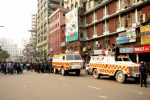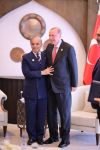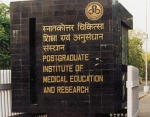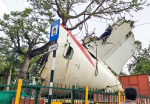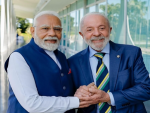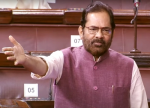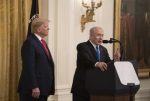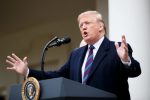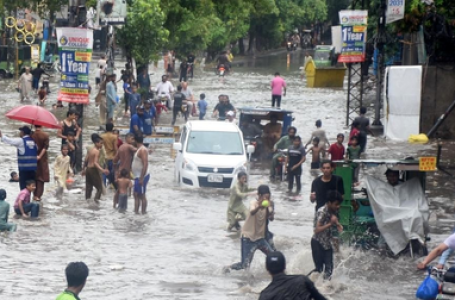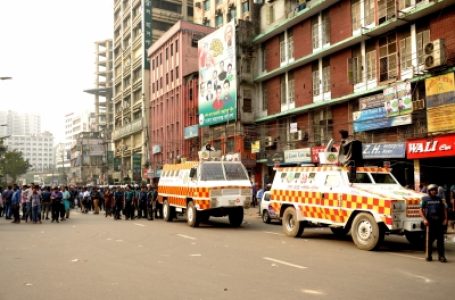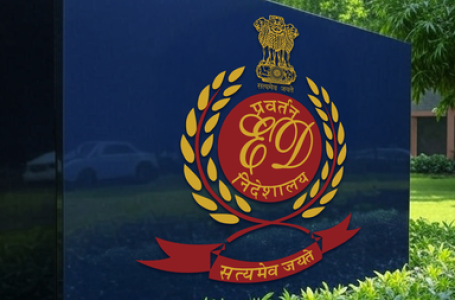
New Delhi, April 10 (IANS) In 2015, the Chinese Communist Party (CCP) announced the most extensive set of reforms for the Peoples Liberation Army (PLA) in its history. These reforms sought to consolidate President Xi Jinping’s hold over the Army and bring about jointness in the forces by replacing military regions with theatre commands.
They also focused on moving the PLA from legacy military capabilities by creating two new services — Joint Logistics Support Force (JLSF) and Strategic Support Force (SSF). These reforms come on the back of China’s military spending, which has surpassed the annual GDP growth, reflecting Beijing’s priority to military modernisation and the growing role of the military in its global ambitions.
These reforms have far-reaching implications for India and the region because they are turning the PLA from a bloated and corrupt military to a capable force. They herald a significant expansion of Beijing’s conventional military power and space and offensive cyber capabilities. With these reforms, China is amplifying its focus on maritime, cyber and tech-based threat perceptions.
China’s increasingly assertive posture vis-a-vis its neighbours and the United States in recent years demonstrates confidence in its military capabilities. From Ladakh to Taiwan Strait, the world has witnessed a belligerent Chinese behaviour. Therefore, understanding China’s assertiveness necessitates understanding the nature of these reforms and the structural changes initiated within the PLA.
Methodology
For research on this subject, official sources (PLA and Chinese Ministry of National Defence documents) in English and Mandarin have been used. Translation of the PLA’s flagship doctrinal document, ‘Science of Military Strategy’ (2013), has been made publicly available by the Air University of the US.
Commentary by Chinese analysts available on the China National Knowledge Infrastructure portal was translated and used for this research. In addition, this paper also cites American strategic analysts’ works on the PLA. The author also spoke to multiple Indian strategic experts who study the PLA’s military capabilities and the Party-Army ties.
Background
The birth of the People’s Republic of China (PRC) in 1949 was the result of a political revolution achieved by the PLA. The military’s significance for the CCP’s consolidation is often underlined by PRC founder Mao Zedong’s slogan given in 1927, “Political power grows out of the barrel of a gun.”
Moreover, the CCP has often claimed that it represents Chinese people’s interests. Therefore, the party has contended that having the PLA serving the party is “tantamount to serving the state and the Chinese people”.
A formal arrangement consolidated this symbiotic Party-Army relationship after the establishment of the PRC. Under this arrangement, Chairman, CCP, was also made Chairman, Central Military Commission (CMC) — the highest decision-making body on military affairs. Seven decades since the PRC’s establishment, the CCP has relied on the PLA for unifying and governing the country, demonstrating the criticality of the PLA. Its significant role in ensuring order was evident during the Cultural Revolution in the 1960s and the Tiananmen Square Crisis of 1989.
Conceived mainly as a ground force, the PLA has expanded and modernised significantly over the years. Under the chairmanship of Xi Jinping, the PLA is aspiring to become a “world-class” military by 2049 and emerge as a force steeped in the CCP ideology.
As the 18th Party Congress Work Report of November 2012 noted: “To modernise national defence and the armed forces, we must follow the guidance of Mao Zedong’s military thinking, Deng Xiaoping’s thinking on enhancing our military capabilities in the new historical period, Jiang Zemin’s thinking on strengthening our national defence and armed forces, and the Party’s thinking on strengthening our national defence and armed forces under new conditions.”
As part of this, the CCP undertook a series of detailed reforms of the PLA starting 2015. The aim in PLA’s own words was to break down “systematic, structural, and policy barriers”, modernise “the organisation of the military”, and improve “combat capacity”.
Rationale for PLA’s extensive reforms
The PLA — the world’s largest military force with more than 2 million active personnel — is often described as “party-army with professional characteristics”. Mao’s successor, Deng Xiaoping, made a concerted effort to put the PLA under the command of the state instead of the CCP — an initiative carried forward by his successors, albeit with varying degrees of emphasis. The ascent of Xi Jinping in 2013 marked a new chapter as he sought to inject a renewed sense of party ideology into the PLA and modernise it.
Taking forward Xi’s initiative, in November 2015, the party announced a series of detailed reforms for the PLA. According to the CMC, the objective was to “consolidate and improve the fundamental principles and systems of the party’s absolute leadership” over the PLA, and reinforcing their symbiotic relationship. As noted earlier, these reforms had been on the CCP agenda since the 18th National Congress.
While the PLA had implemented reforms earlier too, the current reforms are far more sweeping than the previous ones, given the dismantling of the existing structures and the creation of new forces. This was the first time that the CMC identified definite time-frames for these reforms: “integrated” by 2020, “informationised” by 2035, and “world-class” by 2049.
Though “world-class” is not explicitly defined, a rough survey of ‘PLA Daily’ suggests that world-class forces are roughly similar to major military powers, including the US, France, UK, and to a certain extent in some elements, India. This points towards the ability to deploy (including airlift) troops with agility and flexibility anywhere, including abroad, to protect Chinese interests.
These reforms align with China’s expanding overseas footprint — investments under the Belt and Road Initiative, growing profile of the PLA Navy (PLAN) in anti-piracy operations and its first overseas military base in Djibouti, on the Horn of Africa. Besides, these reforms bring the PLA on a par with the major militaries in the world in terms of force posture and joint capabilities.
The Science of Military Strategy of 2013 had articulated the underlying thought behind these reforms.
According to it, China’s strategic ‘tixi’ (system of systems) should be constituted from the three levels and five types of strategy: national strategy, military strategy, the services’ strategy, the theatre of war strategy, and the strategies for the major security domains (nuclear, outer space, and cyber spaces).
The Chinese scholar, Yan Hui, notes that reforming the PLA is necessary as the PLA faced several problems such as “excessive scale, single arms, unsound institutions, inconsistent organisation, and irregular military management”.
Consequently, according to him, China lagged behind other militaries in terms of modernisation. One analyst, Dang Yifei, has described these reforms as a combination of “political sobriety” and “strategic determination” to achieve combat effectiveness. Another analyst, Dai Kun, has noted that these reforms have a “high degree of responsibility,” “a scientific reform strategy”, and “a strong appeal to the times” to ensure PLA’s transformation into a world class military.
Xi has often cited the PLA reforms as a means to crack down on corruption within the military, similar to the initiative that he had launched for the CPC.
According to Xinhua, since the 18th National Congress in 2012, more than 100 PLA officers at or above the corps level, including two former CMC vice chairmen — General Guo Boxiong and General Xu Caihou — have been punished during the anti-corruption drive by being handed out life sentences, dismissal from service and expulsion from the CCP.
Outside China, Indian and Western experts have largely perceived this crackdown as also being aimed at purging the political opponents of Xi and thereby helping him to strengthen his grip over the party and the army.
The restructuring of the PLA comes on the back of an exponential increase in China’s defence budget since the late 1990s. For the past decade, its military spending has surpassed the annual GDP growth, reflecting Beijing’s priority to military modernisation and its global ambitions.
In 2020, its spending was $209.16 billion (1.268 trillion yuan). According to Chinese Ministry of Finance figures, this year, the spending is expected to be close to $208 billion (1.35 trillion yuan).
There’s little transparency on China’s actual defence expenditure, but one trend that has become clear since 2010 is that China’s internal security spending has exceeded the external defence spending, and the gap between the two is expanding with increased security expenditures to maintain stability and order in Tibet and Xinjiang provinces. In 2017, China’s internal security spending was equivalent to about $349 billion — compared to the official external defence spending of $150 billion. – IANS
(To be continued)



